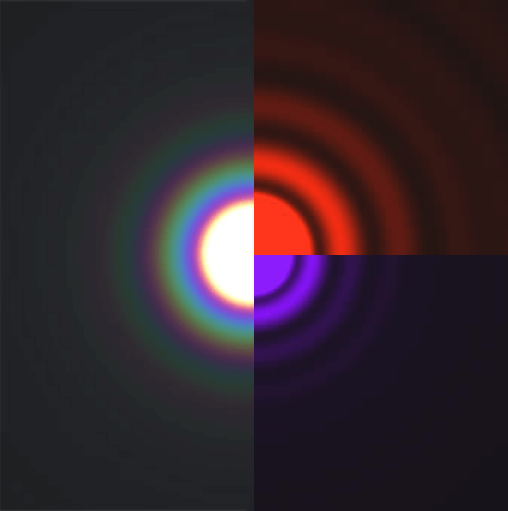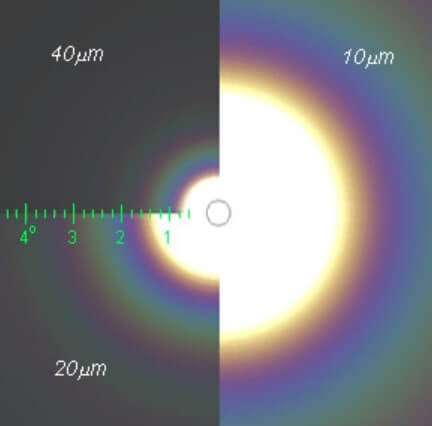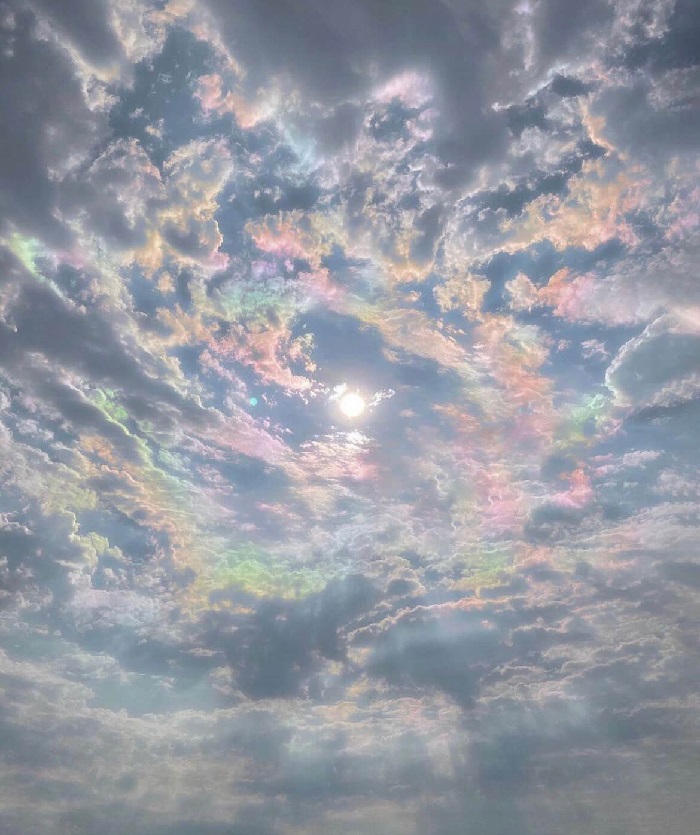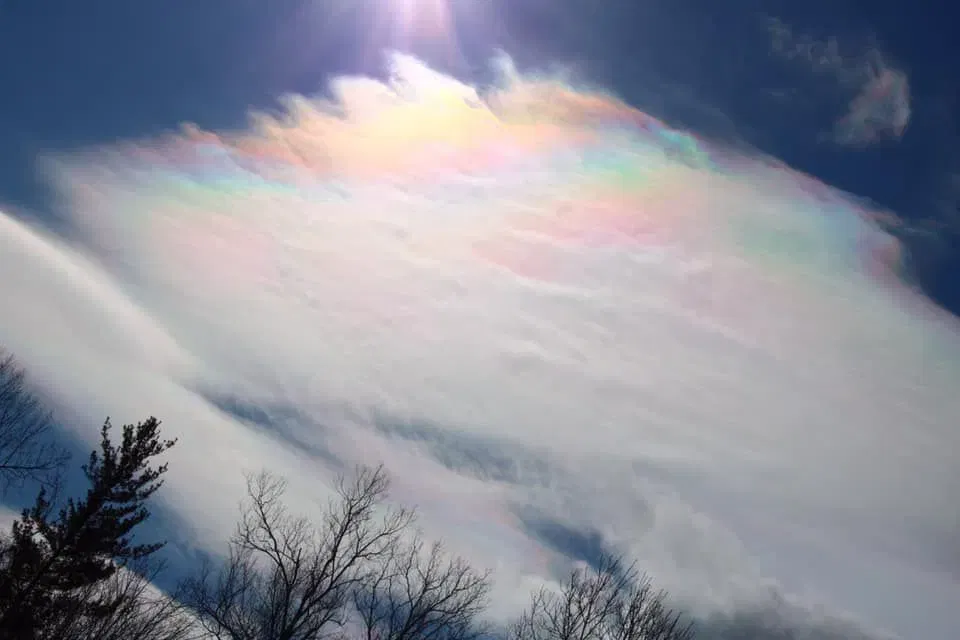Corona and Cloud Iridecence
Important update: These pages have moved to their own domain at https://rainbowspec.observer, where their information, organization, and graphics have been significantly improved! This page is replaced by my new corona page.

Corona
The interference of light not only results in supernumerary rainbows but also rainbow bands around the sun or moon. This is a different corona than the one that is visible during a solar eclipse (which is the outer surface of the suns atmosphere), instead this rainbow colored corona is much larger and usually caused by a thin layer of clouds over the sun or moon. Other small particles like ice crystals and even pollen can result in coronae.Corona - AtOpt

Just like with rainbows, violet light makes the smallest rings, and is closet to the center. Red light makes the largest rings on the outside of each rainbow band. The center of a corona is pure white beyond the sun because these colors overlap so much. Near the edge of the overlap we see yellow and red because they are large enough not to be cover by other colors, extending past them. This white center is called the aureole.

Like how a wide variation in drop size diminishes the visibility or supernumerary bands, drop size variation diminishes how many rainbow bands can be seen.

Like with cloudbows and their supernumeraries, the size of the drops determines the size of the corona, small drops making large corona, and large drops making small corona!
Corona Drop Size - AtOptCloud Iridecence

Cloud iridecence is strongly related to the corona around the sun. Most cloud iridecence is just a sun corona made by cloud water drops, but it lacks the regular circular form because either the cloud coverage is not consistent over the sun (some parts too thick for the sun to shine through, some parts completely void of cloud coverage), or the water droplets in the clouds are not uniform in size. There may be enough similar sized drops next to each other to create rainbow colors, but all around the sun the drop size varies, resulting in a wide variation of corona sizes. Cloud Iridescence

Nacreous Clouds

Similar to iridecent clouds are the much rarer nacreous clouds which appear in smooth wavy sheets. Cloud iridecence can occur anywhere, but nacreous clouds are limited by an assortment of conditions that distinguish them:
- occur during the winter
- primarly seen in very northern climates
- higher in the sky, formed by clouds made of ice crystals in the stratosphere
- seen better at dawn and dusk because the sun still reaches high up, and they pop out against the dark sky